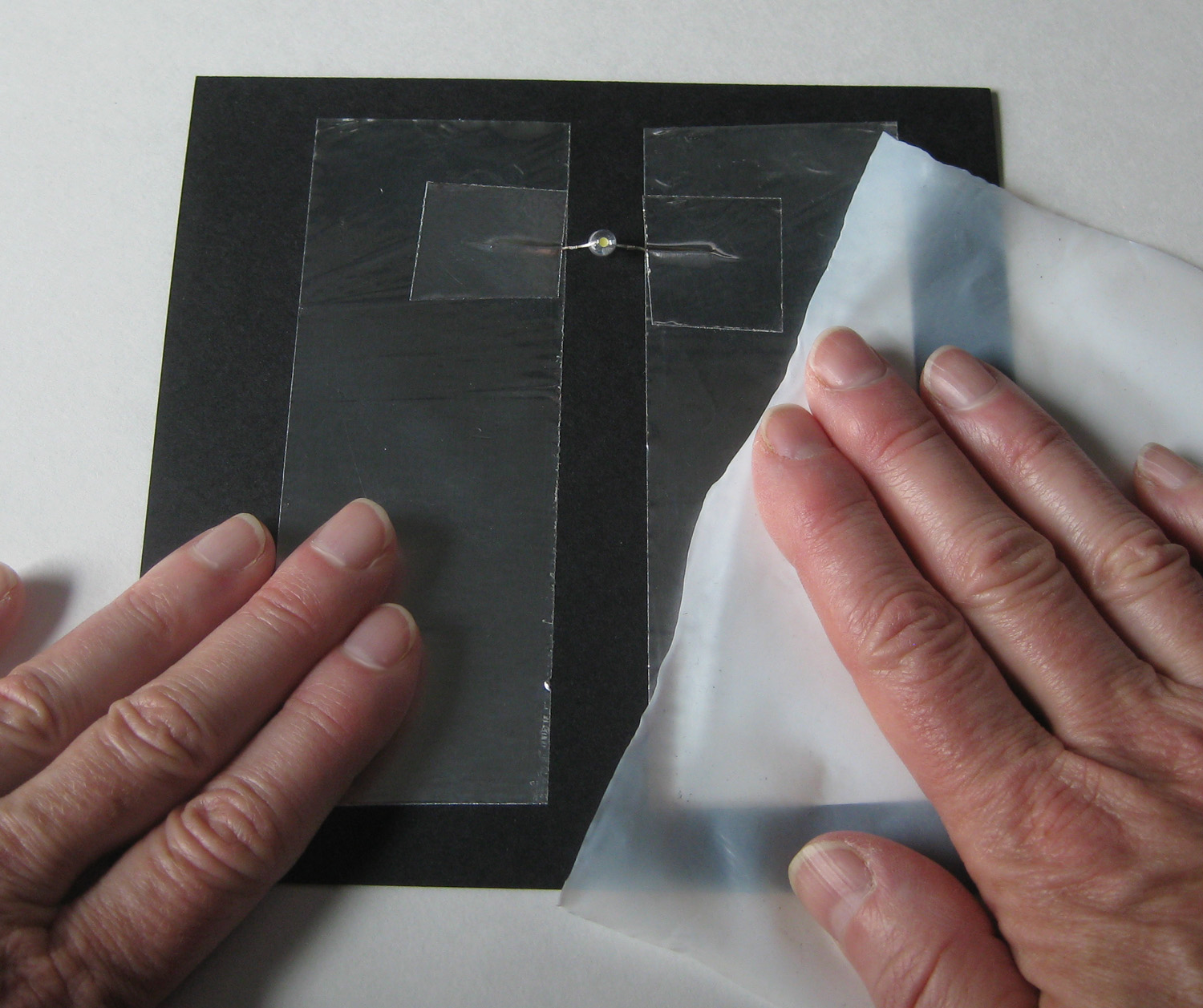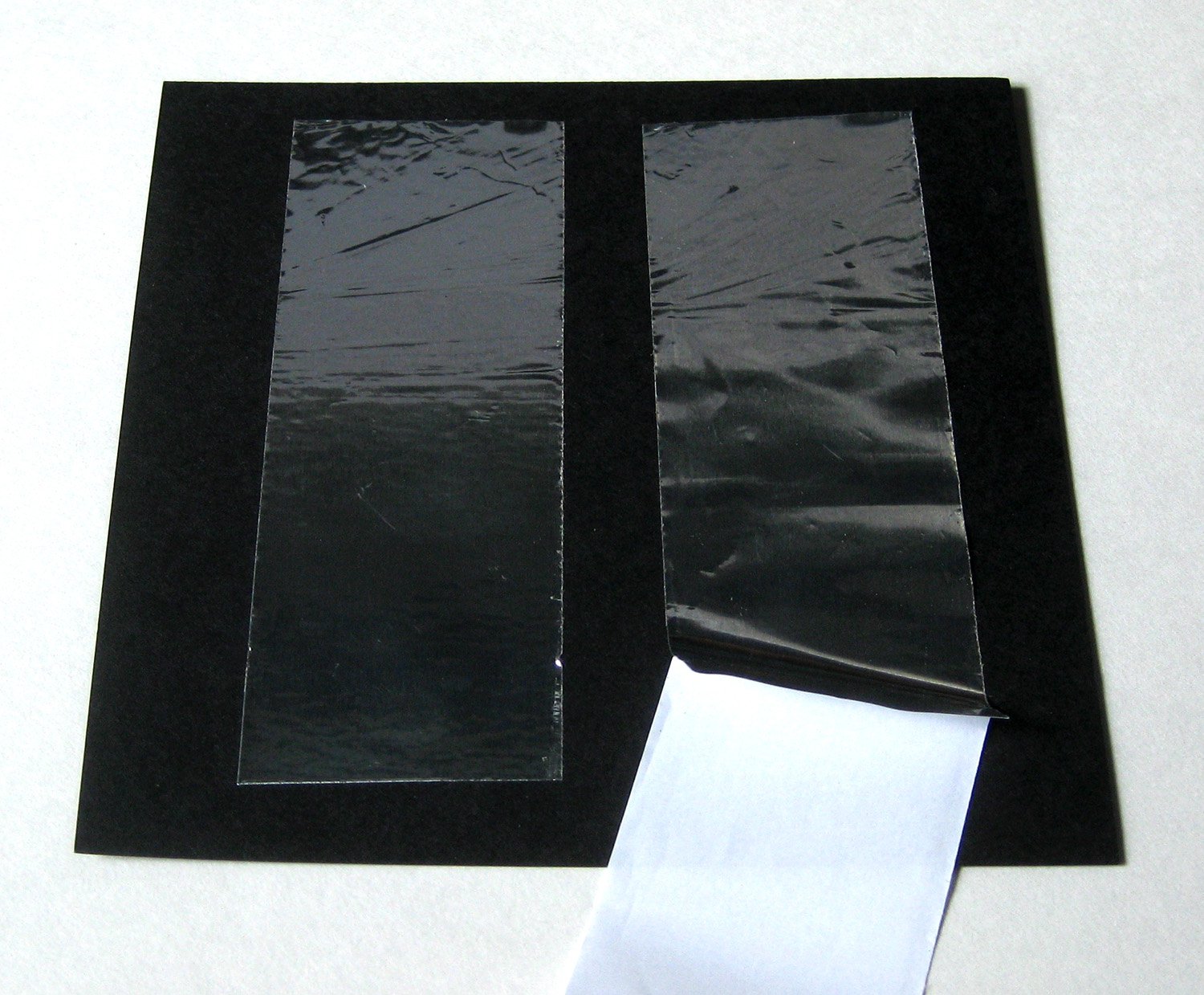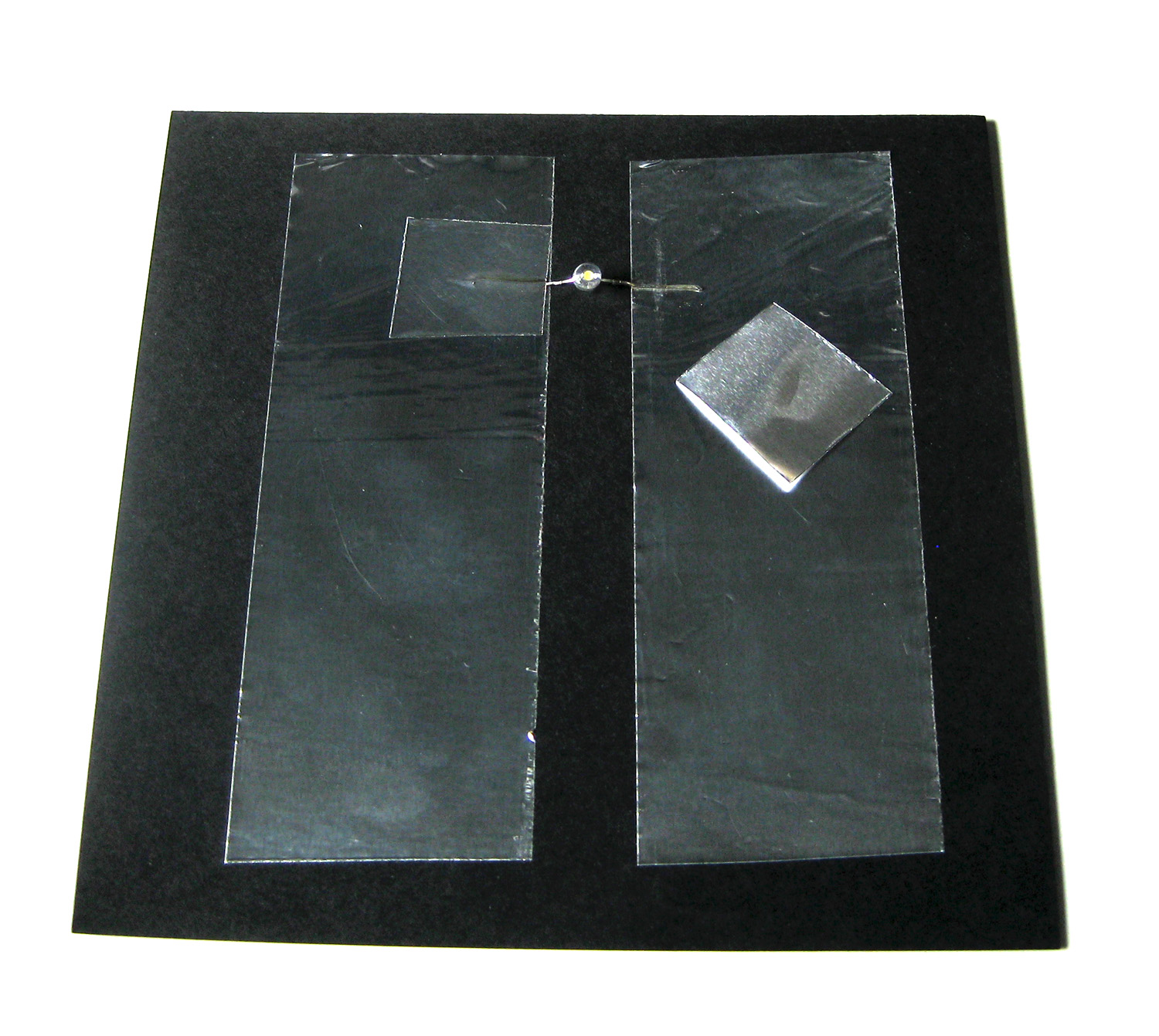Paper circuits are fun and easy to make, but did you know you can even power them without batteries? A paper generator works by building up a static charge in a sheet of Teflon — the same material used as a non-stick coating on pots and pans. Teflon also happens to be an electret, which means it has the ability to hold an excess of negatively-charged electrons. When you connect a sheet of charged Teflon to a circuit and tap, rub, or shake it, you can create enough static electricity to light an LED!
This project was adapted from my book Paper Inventions: Machines that Move, Drawings that Light Up, and Wearables and Structures You Can Cut, Fold, and Roll, based on a paper generator idea from Disney Research, which used it to create self-lighting prototypes of greeting cards, books, and game boards.
What could you do with a paper circuit that doesn’t need batteries?










